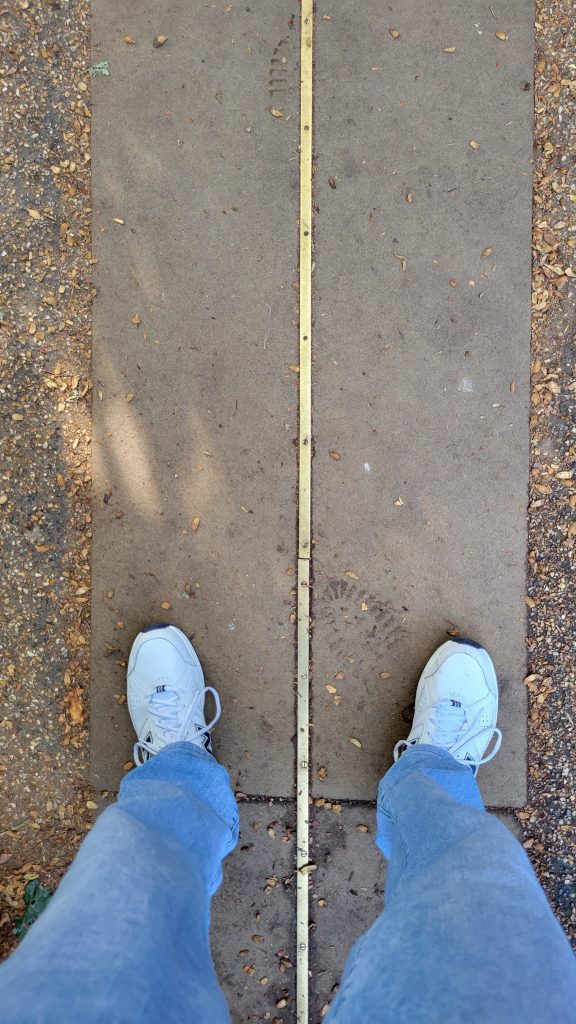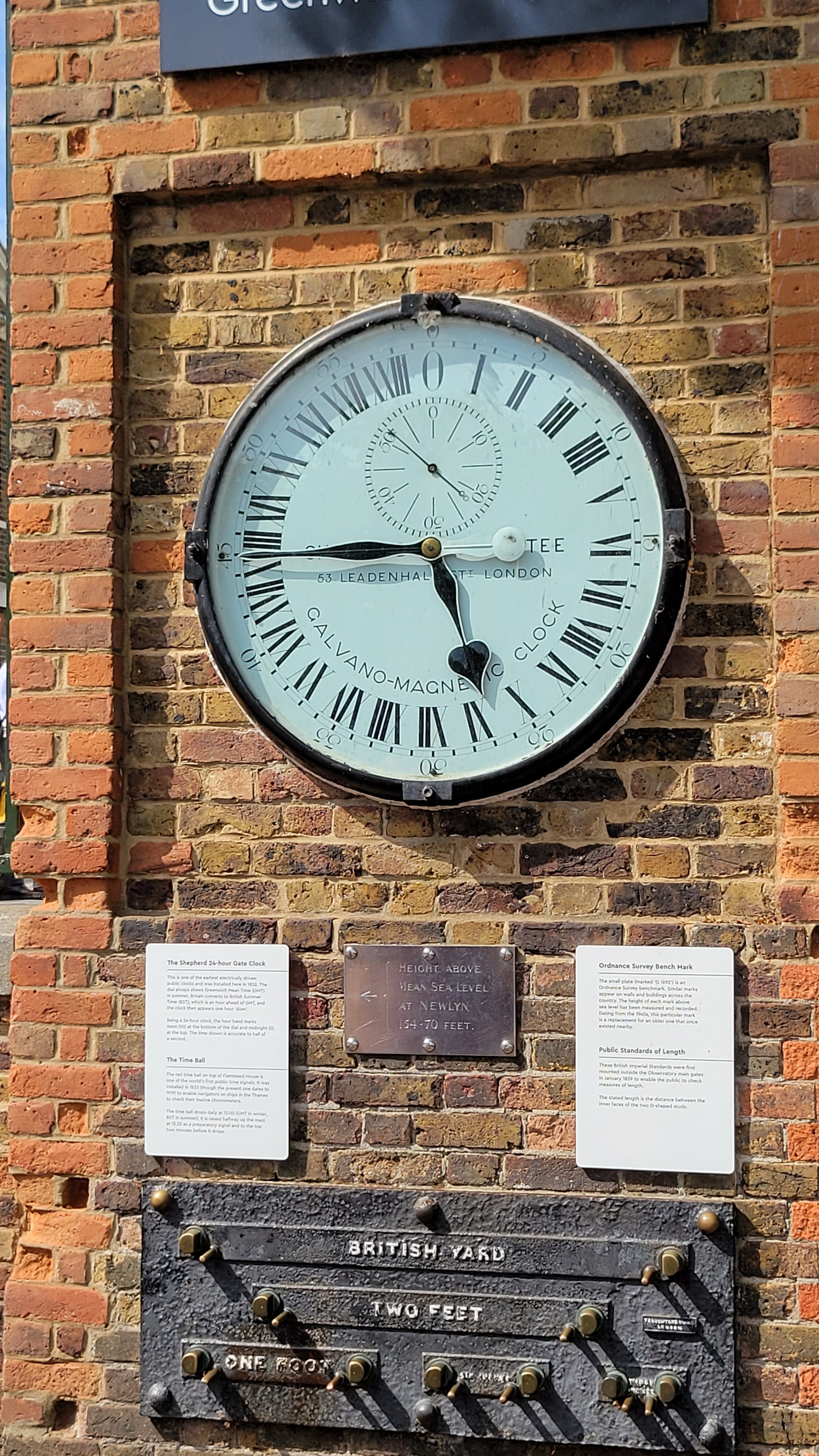
Hello again Fans of Science, all 6,111 of you currently subscribed to the SciSchmooze. Thank you for being here!
Time, and where am I?
I’m currently writing from UTC+2, also known as Central European Summer Time at the moment (UTC+1 in the winter).
A few days ago, I stood on the Prime Meridian at the Royal Observatory in Greenwitch Park, London and learned about the history of time as we know it today. Before there was standardization, each location had their own way to measure time. Nothing was coordinated. Imagine the chaos! The day might have been divided into hours, or some other measurement, and the units of measurement didn’t necessarily start at the same time.
So the Brits developed a standardized method of measuring distance from Greenwich, the location of the Observatory, dividing the earth into 360 “slices” from which time zones were determined, more or less. I say that because politics gets involved and, if you look at a global map, the time zones zig and zag depending on the local political wishes.
This standardization allowed for sailors to determine their location accurately, something very important when you can’t see land and have no idea where you actually are.
“The” clock is coordinated to Greenwich time, and there’s a slave to it sitting outside the Observatory, shown below. Note that it is a 24 hour clock, not a 12 hour version such as we’re used to using. I took the picture at roughly 10:45 Greenwich Mean Time.
Just to prove that this standardization didn’t solve everything, the actual observed time is an hour later, as England observes daylight time during the summer months, Even at Greenwich, the time isn’t the time.

Truth and Science
Before I get into more fun stuff, I want to continue a thought from last month where I wrote about bending truth to fit a group’s beliefs. (You can read it here if you no longer have it.) A few days after writing last month’s Schmooze I came across the “Kids Guide to the Truth About Climate Change” which sounds like it should be a good thing to give to kids. It turns out it isn’t, because it, and similar books in the Kids Guide series have been put out by a right wing organization associated with Mike Huckabee, former governor of Arkansas. It is full of misinformation and climate denial. Insidious, and infuriating! You may need to temporarily subscribe to that site to read the article, but it is worth it, and you can just unsubscribe afterwards.
Also, the Kids Guide series is a monthly subscription series that, according to reviews I read, is very difficult to cancel.
The Moon
There’s lots of news about our Moon this week. On August 30, we’ll have a blue moon, an occurrence so rare it caused a saying in the zeitgeist. Not only is it a blue moon, it is a super moon, with the moon being closest to Earth when it is full this year. Go out and take a look at moon rise time!
India became only the 4th country to land a spacecraft successfully on the Moon this past week. Known as Chandrayaan-3, it was also the first to land near the moon’s south pole. Congratulations India! Just one day later, the craft’s rover rolled out and began exploring the surface. They weren’t wasting any time!
Russia also attempted to land a spacecraft on the moon this week. Things didn’t go so well, as Luna-25 crashed into the surface. This effort was to show Russia can do more than walk, chew gum, and fight a war at the same time, and after the failure there was blame all around. A familiar refrain.
Environmental waste and construction
I don’t drink coffee (I know, I’m one of those people) so I never really thought about just how much spent coffee grounds are produced by the world. Concrete is made from cement, sand, and other aggregates. Sand is a natural product, but not limitless in supply. It turns out that if you replace some of the sand with used coffee grounds, the resulting concrete is 30% stronger and you get keep the grounds from landfills! Does this give the concrete a scent which would drive more coffee sales?
Energy
Lithium-ion batteries power our hybrid and electric cars, our phones, our cordless tools, and even a small fan I bought here in Europe. Last month I wrote about the danger of China being the only significant supplier of Lithium. Researchers in Australia may have solved this issue using Zinc, a much more available element. Batteries made with Zinc have had one major drawback…they are single use and can’t be recharged. Never say never. Scientists have come up with a way to recharge zinc batteries, and this could change things in a big way if the technology is scalable.
Picks for the week
- Andrew Fraknoi: Two Eclipses of the Sun – Monday, Aug 28 at 5:30 PM, San Francisco
- Wonderfest: The Science of Healthy Aging – Tuesday, Aug 29 at 7:00 PM, Novato
- First Fridays: Stellar Ending, Death of Stars – Friday, Sept 1 at 6:00 PM, Oakland
Have a great week in Science!
Bob
Upcoming Events:
Click to see the next two weeks of events in your browser.
